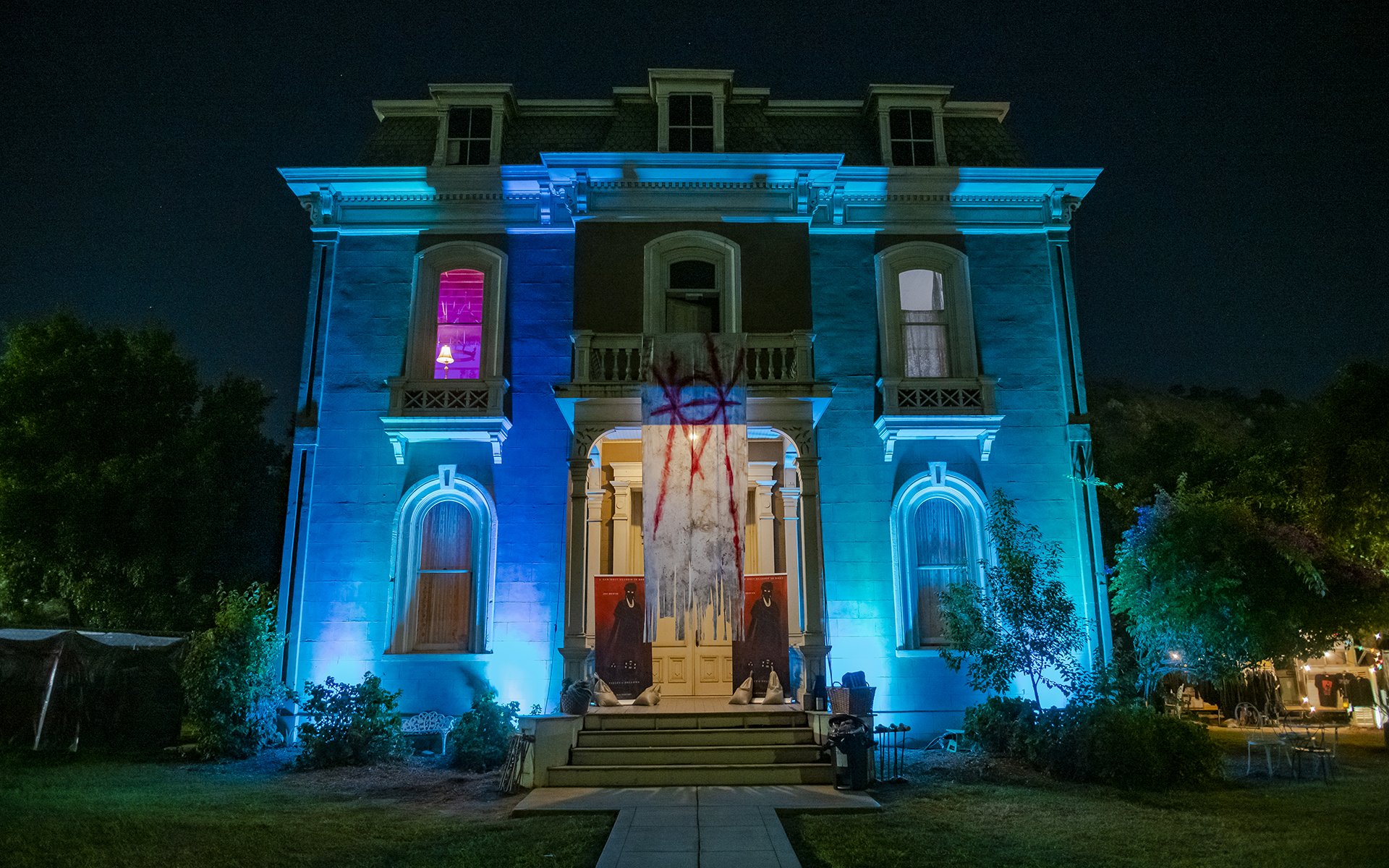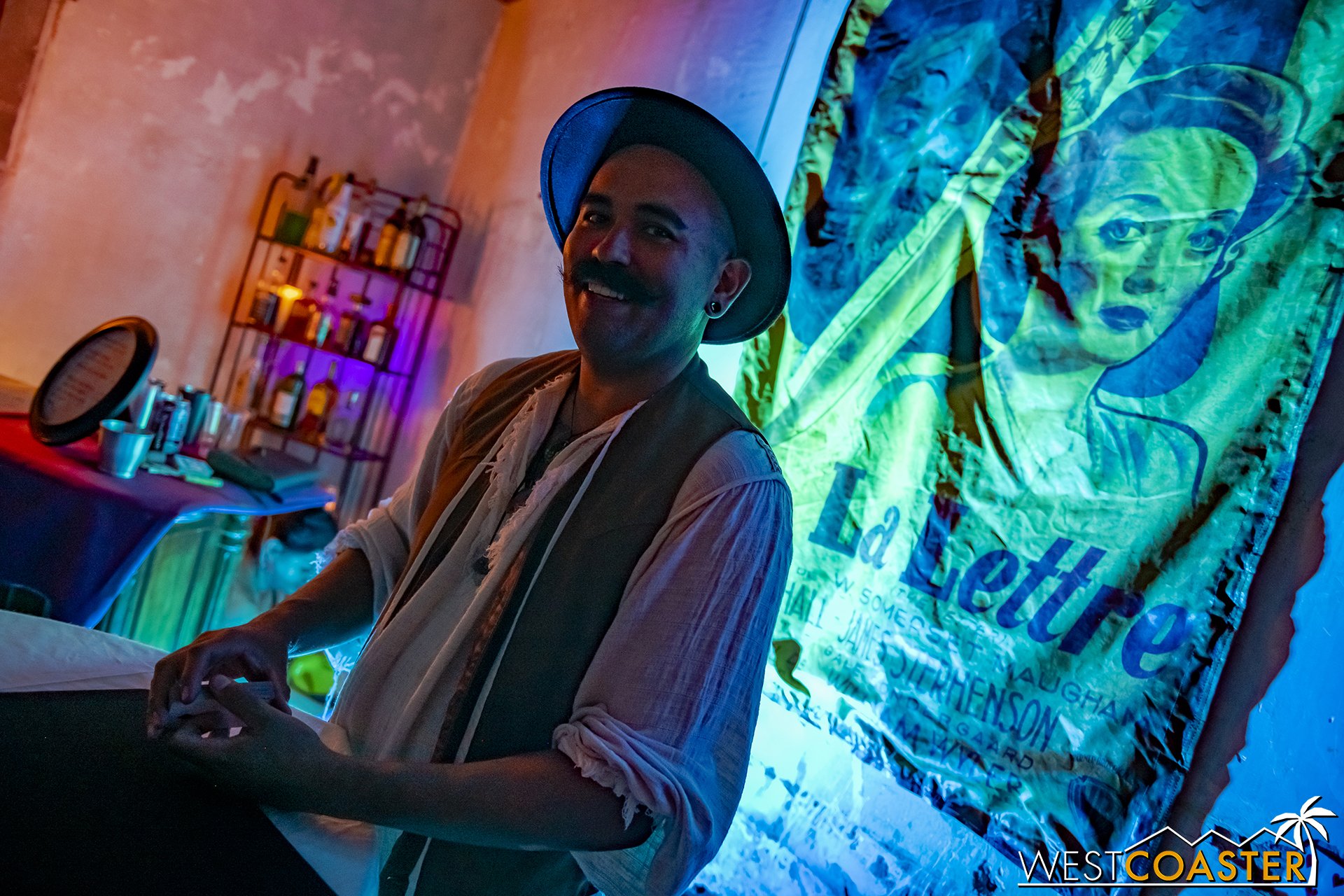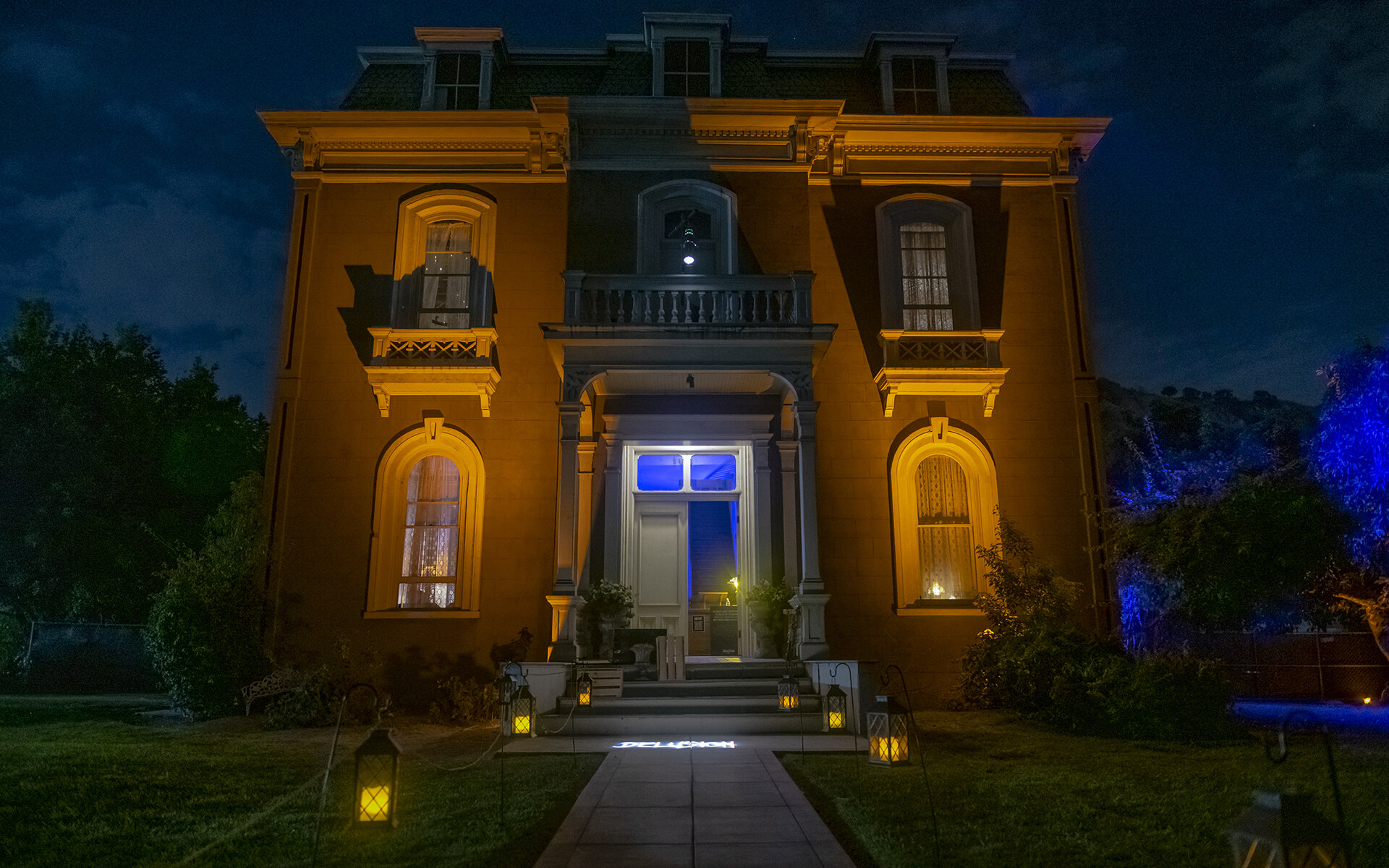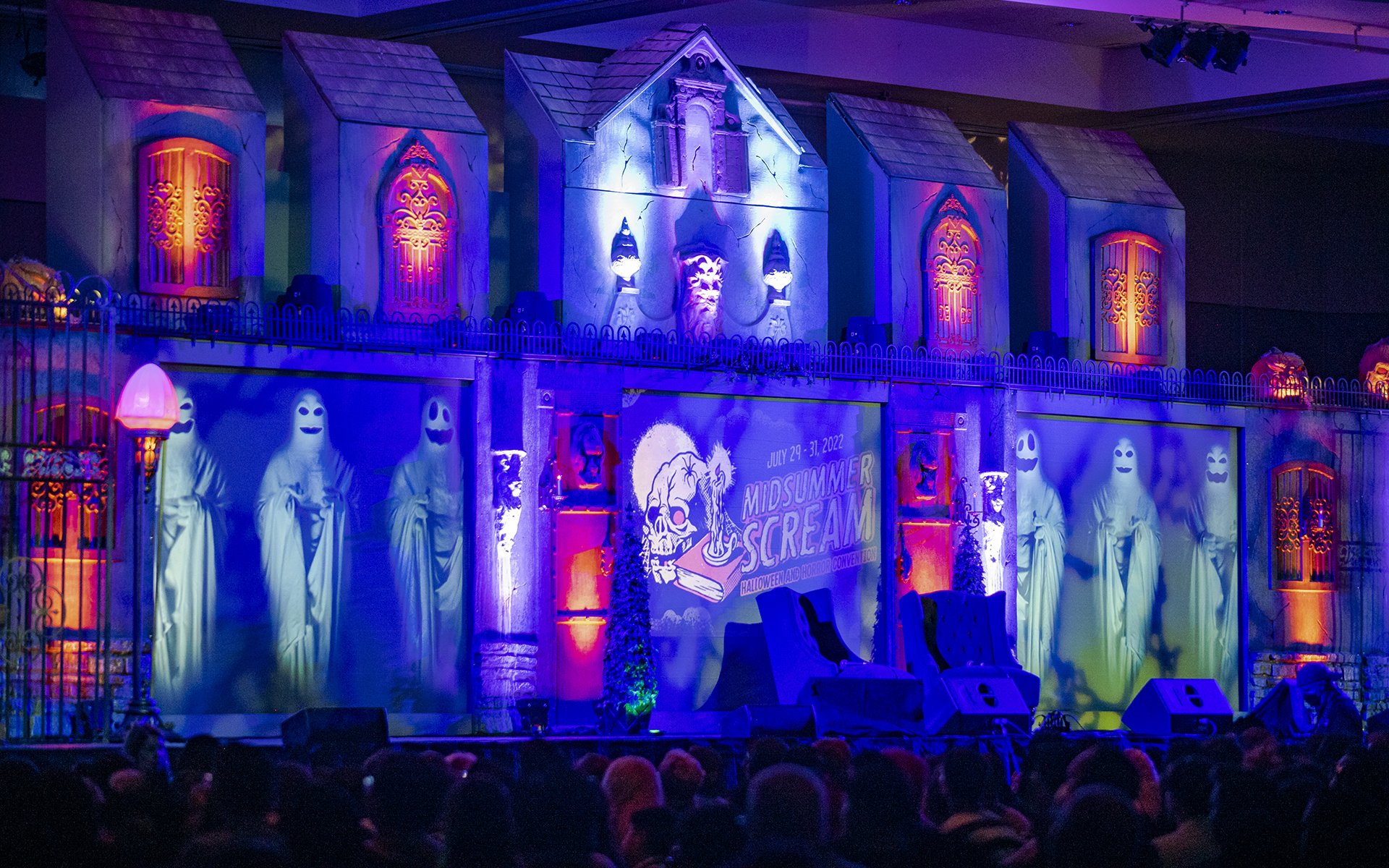Delusion - Valley of Hollows: 2022 Review

Phillips Mansion, Pomona, CA
Since its debut in 2011, part of both the appeal and the struggle with Delusion is whether or not it will be back the next year. The interactive and immersive haunted play's premise of being staged in a real residence that inspires and shapes the story created exceptionally compelling and viscerally authentic environments that felt even more real than just a typical theater setting, but they also caused challenges with permitting, neighborhood acceptance, and even just plain availability.
That's why last year's announcement that national haunted attraction powerhouse, 13th Floor Entertainment had hired Jon Braver as Director of Immersive Experiences and thus acquired the Delusion franchise was so exciting. With the weight of a whole conglomerate behind him, Braver could have a more consistent and stable infrastructure that could allow him to produce Delusion plays more regularly--not to mention delegate the business aspects to other parties and allow him to focus on the story-writing, world-developing, and horror manifesting.
Delusion returns another haunting play filled with mystery this year.
These fruits seem to have been borne immediately. Though Delusion did run every season from 2011 to 2014, it skipped 2015 and 2017. And of course, 2020 was a bust for pretty much everyone. Last year, though, Delusion returned to the horror scene in a grand manner with its creepy and riveting Reaper's Remorse show, set in the historic Phillips Mansion in Pomona. Crafting an alternate and much more sinister identity for Esther Phillips, real-life wife of locally prominent historical figure Louis Phillips, Reapers Remorse set participants in a post-World War Los Angeles, where guests were gathered together to one of Esther's famous house parties, only to be revealed to have been poisoned and effectively blackmailed into helping Esther collect souls for her artifacts to bolster her collection. With the promise of an antidote dangle as an incentive, guests proceeded through the property to help achieve Esther's insidious goals, before she reappeared at the end of their mission to reward them with the healing elixir.
Flash forward over two decades, to the dingy, psychedelic, cult-fueled ambiance of the 1970s, and Esther Phillips is long gone--or at least she is believed to be. It turns out Esther disappeared not too long after the events of Reaper's Remorse. Though presumed dead, she inspired a gathering of followers called The Hollows who somehow took on the idea that she had defied mortality—perhaps through her paranormal collection—and they could too, if only they came to her grounds and helped "feed the soil"—whatever that actually meant.
The story of Delusion’s 1970s present this year is rooted in its past.
This year, through the story of Delusion: Valley of Hollows, guests play the part of deprogrammers looking to rescue the younger brother of a girl, Shayne, that they had extracted from Esther Phillips' cult nearly a decade prior. It seems that Nathan has gone missing, possibly having rejoined the cult that he and Shayne had been indoctrinated into as children. It is the mission of the de-programmers to play their part as undercover cult members in order to find the missing sibling and save him once again.
Guests are briefed on their mission before embarking onto the main story.
With both the setting of this year's Delusion matching last year's and the storyline once again involving Esther Phillips, this year's Delusion is the first that can be considered a direct sequel of a previous show. Though all of Jon Braver's shows are loosely part of the same universe, with Easter egg connections that link different characters across different stories, Valley of Hollows directly picks up on the events of Reaper's Remorse and expands upon them in a historical era that Delusion has never explored. It helps that the story revolves around arguably the most malevolent villain Braver has ever created. Last year's Delusion left guests wondering what might happen next, because there was no conclusive ending with Esther Phillips' fate and future or even a semblance of penance for her wicked actions. Thus, it was an exciting development to see Valley of Hollows take on another chapter in this story.
One might wonder how Delusion might craft a new and unique experience while utilizing the same setting as the year prior. Well, this isn't the first time Delusion has used a house for more than one production. 2012's The Blood Rite was located in the same house that hosted the previous year’s original Delusion, and Braver and his team convincingly crafted completely different atmospheres for both. But with the Phillips Mansion, a legitimate historical landmark with much greater limitations on what can be altered, the options to craft a different feel might be more limited.
The stately Phillips Mansion is once again the setting for this year’s Delusion.
Fortunately, Valley of Hollows manages to create a very distinct experience that provides a few references and callbacks to select (and favorite) aspects of last year's show but ultimately stands out as its own separate and dramatically terrifying episode! It starts with the ambiance of the Phillips Mansion, which has traded last year's post-World War (yet somehow gothic) feel for the hazy, free-spirited, almost dirty vibe of the 1970s. There is no "open world" environment that Reaper's Remorse introduced last year. Instead, the pre- and post-show space is more of a general decorated waiting area in the vein of previous Delusions, showing a commune-looking space with trippy paintings, far out furnishings, and a not-so-subtle smattering of drug paraphernalia, with much less storyline clues and hidden interactive elements. Although there are still some Easter eggs for longtime fans of Delusion!
The interior decor has transitioned to the free-wheeling, cult-centric 1970s.
Instead, the bonus experiential content is more reserved for guests purchasing a VIP ticket that grants them access to the second floor of the stately abode. There, they can partake in the Kool-Aid VIP bar, enjoy an intimate and spellbinding show with close-up magician Chris Ruiz, espy 1970s horror classics in the Theater of Bad Omens, and experience Hell's Hollow, a side attraction that is essentially a blackout maze that forces guests to rely on their other senses to navigate and also heightens their tension through precise sound and tactile cues. The VIP Experience can be done before or after guests go through the main show, though this year's story feels like it is better if traversed first, before guests recover and enjoy some refreshments and entertainment upstairs.
This specialty cocktail is only available in the VIP bar upstairs, though one should know not to accept drinks from Esther Phillips.
Magician Chris Ruiz conjures sorcery.
Hell’s Hollow is a much more personal experience than last year’s intimate small group immersive extra.
Outside the mansion, a similar setup of merchandise and food and beverage stands can be found to the right of the Phillips Mansion, while a seating area and what looks like a little camp completes the 1970s cult setting. As for the actual show, the format parallels the sequence guests took last year--which we won't spoil for readers who did not experience Reaper's Remorse. Yet, some of the misdirection is present even at the beginning in how guests reach their destination, unfolding differently and with more stealth and immediate stress over fear of discovery than last year's more deliberate unveiling of terror. And as the next approximate hour progresses, there's a fun secondary enjoyment in culling both the similarities and differences to where this and last year's shows take guests.
A photo op and souvenir stand are outside.
A food stand laden with little references and Easter eggs offers some tasty grub for hungry players.
Though the 1970s cult theme of Valley of Hollows might suggest a more grounded form of horror that references true crime and the associated mania of that time period, the experience guests receive actually feels much more like the traditional, supernatural frights of previous Delusions set more deeply in the past. Most of the suspense and frightening moments would feel fitting in any historical era, and the focus seems to be more on the portrayal of these dramatic moments in the show. In fact, this year's Delusion makes a bolder and redoubled commitment to more epic and cinematic scares that build on exhilarating reveals, high tension, and moments of flight and panic. Stunts using pulled wires, characters bursting through walls, monsters unfolding through the dark... they all add to moments that feel much more like a classic horror story than a real-life-inspired tale of cultish control. There's also a larger investment in creature design, with multiple encounters with various beastly fiends that are sure to trigger heart palpitations and stir high adrenaline.
These stacked moments help make the approximately 50 minute experience fly by, which helps because this year's show runs tighter cycles than before, cycling six groups through the story each hour instead of five. From the moment guests discover the unnatural and grotesque practices belying the truth of what The Hollows are actually doing, they're practically on the run the rest of the time, searching for Nathan but trying to evade a host of unsavory characters both human and not!
By the time Valley of Hollows concludes with an unexpected epilogue that follows up sometime after the events of main part of the play, Delusionals might need a moment to catch their breath. The riveting and fast-paced story needs time to process. And of course, there is the inevitable communal download of what happened to those to branched off the main group when pulled away by a character or sent off on a side quest. Those little instances add variety and help encourage repeat visits to get a complete experience.
Delusion is about the communal experience of unravelling the secrets of a story while witnessing incredible stunts and shared scares of the spectacle.
While not my personal favorite (I'm still most partial to His Crimson Queen and The Blood Rite), this year's Delusion nevertheless stands as an excellent, action-packed, thrilling example of immersive and interactive haunted theater. The qualifer isn't a knock on Valley of Hollows, it's a testament to the amazing quality that all Delusion shows hold. Ranking them is almost like scoring the classic Pixar films produced during the studio's first decade and a half of feature filmmaking.
From a thrills, immersion, and entertainment level, this year's show is on par with last year's--even though they are two very different-feeling productions. The actors are fantastic and customarily convincing. The physical stunt work and special effects are superb. And the technical synchronization is mostly seamless (we did have trouble triggering something at one point, and the resulting audio ended up playing before we could do so in order to keep the story going and avoid an awkward pause). The only wish I had was for more instances of dividing up the group to offer more unique moments, but I also understand the complications of reconciling that with the logistics of getting guests through each section of the play in a timely manner. But at the end of the night, Delusion once again delivers its trademark blend of sordid storytelling and scintillating scares, leaving participants blown away and seeking more.
Delusion runs most Wednesday through Sunday nights from now through November 20th. Tickets start at $89.99, with VIP admission starting at $124.99, plus fees. Though in past years, Delusion often sold out before or early into its run, this year's higher capacity means that tickets still remain. Visit enterdelusion.com for more information.
Congratulations again to Jon Braver, this team, and the cast and crew of Delusion. They continue to showcase their incredible talents for crafting arguably the best immersive and interactive theatrical spectacles in the haunt industry!
Architect. Photographer. Disney nerd. Haunt enthusiast. Travel bugged. Concert fiend. Asian.



















































